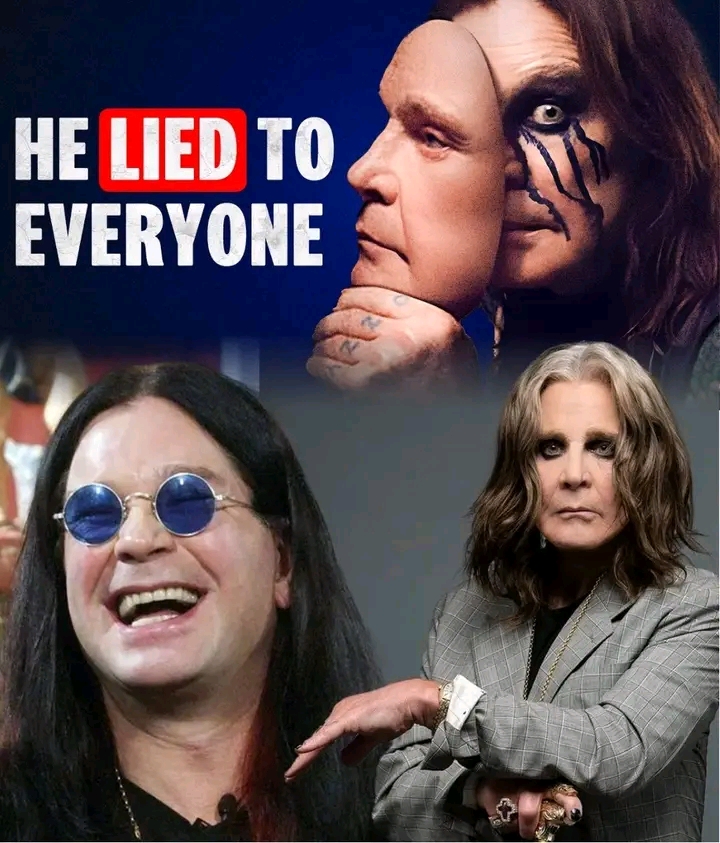
For more than five decades, the world has known him as the “Prince of Darkness a bat-biting, mumbling, eyeliner-wearing wildman who defined heavy metal and scandalized an entire generation. But in a stunning twist that’s left even die-hard fans reeling, Ozzy Osbourn the myth, the menace, the misunderstood genius has finally been unmasked. And the truth? It’s not just surprising. It’s rewriting everything we thought we knew about one of music’s most infamous icons.
Because behind the chaos, the profanity, and the storm of legend… Ozzy Osbourne was never really the monster we were sold. He was something far more human and far more brilliant.
The Mask We All Believed
Let’s start with the myth. For decades, Ozzy was the world’s favorite villain the man who bit the head off a bat (true, though accidentally), the unholy frontman of Black Sabbath who turned the church’s hymns into headbanging hymns of rebellion. Parents warned their children about him. Pastors preached against him. Politicians blamed him for everything from devil worship to moral decay.
The headlines never missed an opportunity: “Madman of Metal! Satan’s Favorite Son! Rock’s Most Dangerous Man!”
And Ozzy, always the showman, played his part to perfection. The makeup, the darkness, the growling stage presence it was theater at its finest. He once said, half-jokingly, “If people think I’m crazy, I might as well show them a good time.”
But that wasn’t madness. That was mastery.
Because while the world saw chaos, Ozzy was quietly orchestrating one of the most calculated and successful reinventions in music history.
The Truth Behind the Darkness
Now, at 76, with Parkinson’s disease slowing him but not stopping him, Ozzy is finally ready to talk. In recent interviews and new revelations from his inner circle, a clearer picture has begun to emerge — one of a man who crafted his own myth not to glorify destruction, but to survive it.
Those who knew him best say the “madman” image was both shield and strategy. Behind closed doors, Ozzy was meticulous. He had an ear for melody that rivaled McCartney’s, a work ethic that left younger artists gasping, and an instinct for reinvention that kept him relevant across six decades.
“He wasn’t some stoned-out lunatic,” recalls his longtime producer, Tony Visconti. “He was sharp — sharper than most people gave him credit for. Every growl, every scream, every wild performance — he knew exactly what he was doing. Ozzy was acting. The whole time.”
In other words: the man we thought was out of control was actually controlling the entire show.
The Master of Reinvention
Think about it — how many artists have lived through as many eras as Ozzy and stayed iconic? From Sabbath’s dark beginnings in the 1970s to his solo explosion in the 1980s, to the MTV renaissance of The Osbournes in the early 2000s every version of Ozzy connected with a new generation.
And yet, behind every reinvention, the same pattern appears: a man playing a part, always one step ahead of what the public thought he was.
The “madman” was marketing.
The “darkness” was branding.
The “chaos” was choreography.
Even Sharon Osbourne, his wife and manager, has quietly admitted that much of the myth was intentional. “People think Ozzy’s success was luck,” she said once. “It wasn’t. It was strategy. He knew what people wanted him to be — and he gave it to them, turned up to 11.”
A Hidden Heart
But the biggest revelation of all? The real Ozzy Osbourne — the one behind the eyeliner and onstage growls — isn’t just sane. He’s soft.
Friends describe him as gentle, funny, and heartbreakingly kind. He feeds stray animals. He cries during movies. He still calls his children every day. “The first time I met him, I expected fire and brimstone,” said one journalist who recently spent a week shadowing him. “Instead, he made me tea and asked if I’d eaten breakfast.”
This tenderness, long hidden beneath the theatrics, has begun to emerge more clearly in his later years. In recent interviews, Ozzy has spoken openly about faith, mortality, and regret. He’s apologized for the pain he caused during his years of addiction. He’s spoken about the importance of mental health. And perhaps most shockingly — he’s admitted that the so-called “Prince of Darkness” never truly believed in darkness at all.
“I never worshipped the devil,” he told a reporter last year. “The devil worshipped me for publicity.”
The Greatest Trick He Ever Pulled
So why did Ozzy keep the truth hidden for so long? Because, as he himself once put it: “Nobody wants to hear that the Prince of Darkness feeds ducks and writes love songs.”
He understood something most rock stars never do — that mystique sells, but mystery lasts. By embracing the myth, he ensured his survival. By letting the world think he was mad, he was free to be vulnerable in private. And now, decades later, that duality has become the secret ingredient that turned Ozzy Osbourne from a scandal into a symbol.
He wasn’t just rebelling against society — he was rebelling against expectation.
The Legacy Unmasked
Today, as the world finally sees through the smoke and eyeliner, Ozzy’s legacy shines brighter than ever. He’s not the villain of heavy metal history — he’s its architect. The man who showed the world that darkness can be art, madness can be method, and reinvention is the greatest rebellion of all.
He fooled us — brilliantly, completely, and with a grin.
Because Ozzy Osbourne was never just the “Prince of Darkness.” He was the Master of Illusion.
And as the lights dim on one of rock’s most extraordinary lives, perhaps it’s time to admit:
The man we feared was the man we needed.
The legend we laughed at was laughing with us all along.
Ozzy Osbourne didn’t just survive the madness.
He was the madness — and he made it beautiful.

Leave a Reply